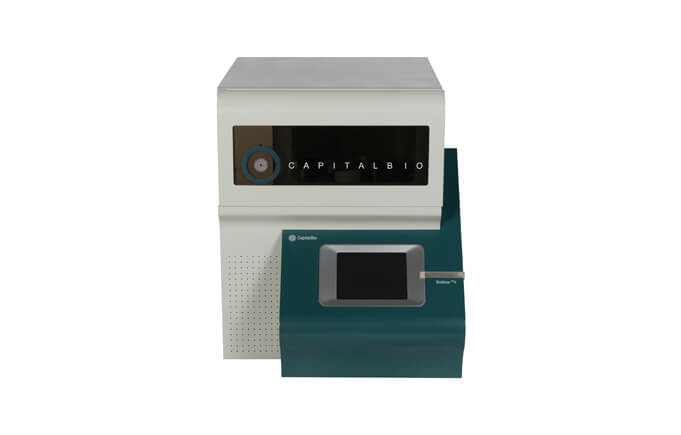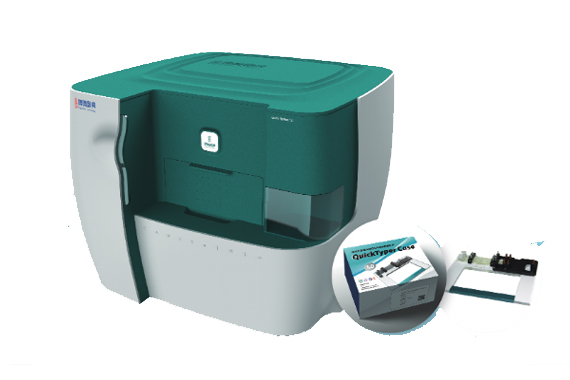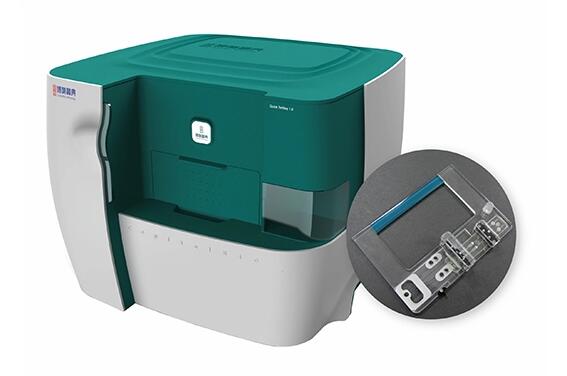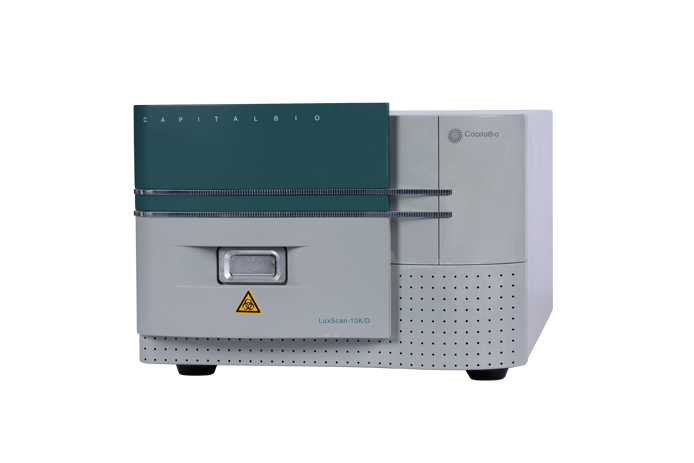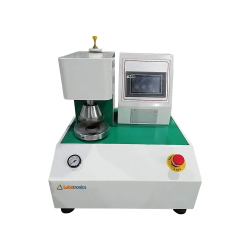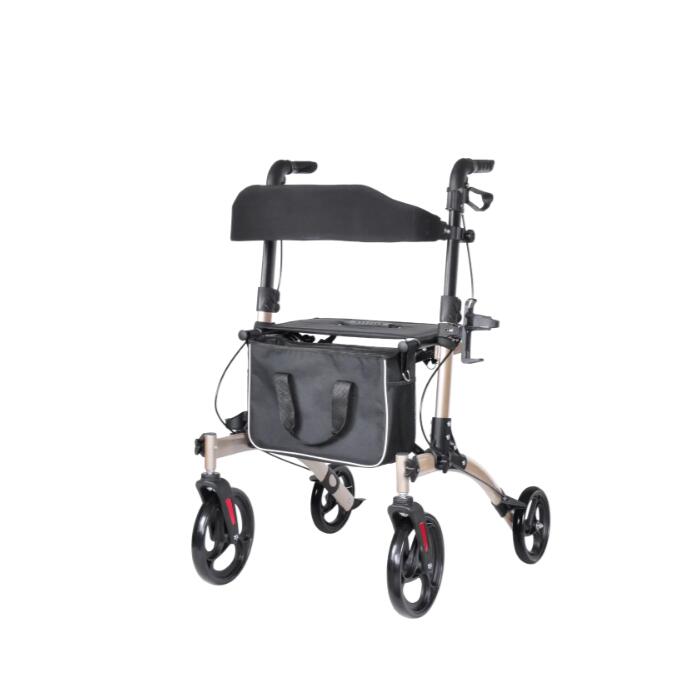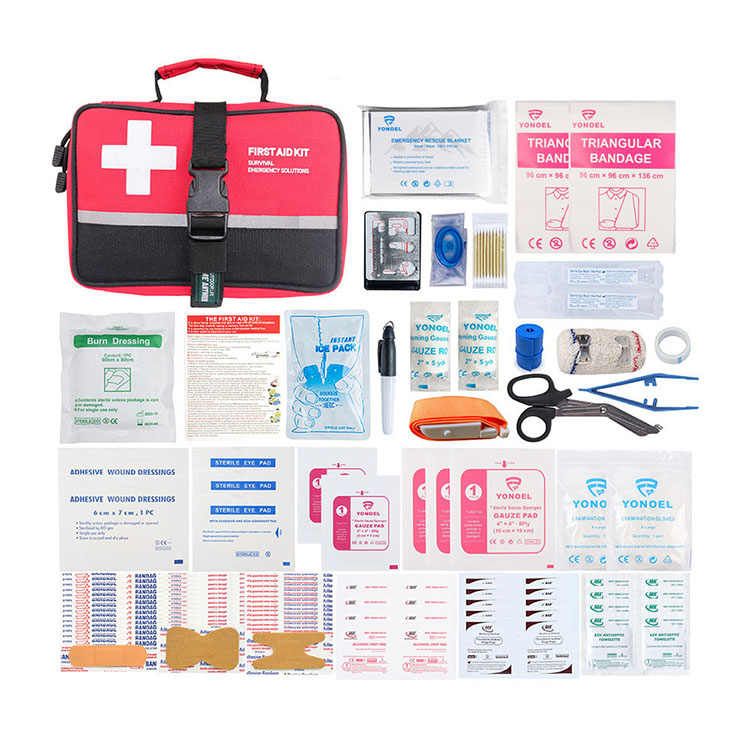CapitalBio® Microarray Hybridization Station
CapitalBio® Microarray Hybridization Station
The CapitalBio® BioMixerTMII is a microarray hybridization station that uses continuous 3-D motion to help the aqueous hybridization mixture spread evenly across the microarray surface in a temperature-controlled environment. This uniformly exposes each sample spot to the reaction reagent solution, resulting in increased reaction signal intensity and signal consistency. It is simple to use, with up to 6 or 12 microarray slides hybridized simultaneously. The microarray platform comes with three interchangeable adapters for hybridization, washing, and mixing biochemical reagents in tubes.
Features of CapitalBio® Microarray Hybridization Station
When combined with CapitalBio's specially designed hybridization cassettes, uniform temperature and humidity are achieved.
Unique 3-D motion guarantees the hybridization signal is homogenous over the whole microarray surface.
Eliminates edge effects. Enhanced results evidenced in recent independent reports on microarray quality and performance, such as Patterson, T., et al., (2006) Nature Biotechnology 24: 1140-1150 and Shi, L., et al., (2006) Nature Biotechnology, 24: 1151-1161.
LCD control panel.
Suitable for microarrayhybridizations and immunoreactions on 25 mm × 75 mm slides or in tubes using different adaptors.
What Is The Difference Between Microarray Hybridization And Northern Hybridization?
Northern hybridization, also known as Northern blotting, is a technique used to detect specific RNA molecules within a mixture. In this process, a single DNA molecule is labeled and hybridized with an unlabeled mixture of RNAs. This allows for the detection and quantification of specific RNA molecules, making it a targeted approach.
Microarray hybridization is a high-throughput method that allows for the simultaneous analysis of thousands of genes. In this technique, a mixture of target RNA, which can consist of many species of molecules, is labeled. This labeled mixture is then hybridized into a solid surface containing thousands of immobilized probes, each corresponding to a specific gene. This allows for the simultaneous detection and quantification of many different RNA molecules, providing a comprehensive analysis of gene expression.
The main difference between the two techniques lies in their scale and specificity. While Northern hybridization focuses on a single RNA molecule, microarray hybridization allows for a broader, more comprehensive analysis. Both techniques have their advantages and are used in different contexts depending on the research needs.
What Is The Principle Of Microarray Hybridization DNA Chip Technology?
Microarray hybridization is a technique based on the principle of complementary base pairing. In this process, DNA strands from a sample are labeled and applied to a DNA microarray, where they seek out and bind to their complementary sequences. These sequences are immobilized onto specific spots on the microarray. The binding process, known as hybridization, is facilitated by the microarray hybridization station, which maintains optimal conditions for hybridization to occur.
The use of a microarray hybridization station ensures a high degree of accuracy and efficiency in the hybridization process. This, in turn, allows for the simultaneous analysis of thousands of genes, providing comprehensive insights into gene expression and genetic variation. CapitalBio Technology utilizes this technology to deliver precise and reliable genomic analyses.
Specification of CapitalBio® Microarray Hybridization Station
|
Features |
Parameters |
|
Capacity |
6 or 12 slides/15 ml tubes/50 ml tubes |
|
Time Range |
1min ~ 23hr59min |
|
Temperature Range |
30 ~65°c |
|
Temperature Accuracy |
±0.5°c |
|
Rotating Speed |
5 ~ 30 rpm (adjustable) |
|
Voltage |
100 ~240 V |
|
Power |
1,000 Watts |
|
Size (W x Dx H) |
405mm x 516mm x 486mm (15.9 in x 20.3 in ×19.1 in) |
|
Weight |
36 kg (79 lb) |
How Is Hybridization Used In Microarray?
Microarray hybridization is a process where two samples of cDNA, labeled with different fluorescent dyes, are allowed to bind to a microarray slide.
The microarray slide contains a grid of DNA probes, each representing a different gene.
The hybridization reaction occurs when these cDNA molecules bind or ‘hybridize’ to the complementary DNA probes on the slide. This binding is highly specific.
After the hybridization process, the microarray slide is placed in a microarray hybridization station provided by CapitalBio Technology. This device maintains the optimal conditions for hybridization, ensuring that the process is efficient and accurate.
The microarray hybridization station is crucial in controlling the environment during the hybridization process, which can significantly impact the results.
The microarray is then scanned to measure the fluorescence of each spot on the slide. The intensity of the fluorescence indicates the expression level of each gene.
By comparing the fluorescence of the two different dyes, researchers can determine changes in gene expression between the two samples.
CapitalBio Technology’s microarray hybridization station is a key tool in this process, providing reliable and efficient solutions for researchers worldwide.
在线联系供应商
Other supplier products
| Forensic Platform | Forensic DNA identification is a scientific and technological weapon for investigation and litigation. The inspection includes DNA extraction, PCR ... | |
| Forensic Platform | Forensic DNA identification is a scientific and technological weapon for investigation and litigation. The inspection includes DNA extraction, PCR ... | |
| CapitalBio® Microarray Scanner LuxScan™10K/D | CapitalBio® Microarray Scanner LuxScan™10K/D CapitalBio® Microarray Scanner LuxScan™10K/D, a novel optical system design based... | |
| Individualized Medication Guidance for Cancer (118 Genes) | This cancer genetic testdetects 136 genes, including 110 targeted drug-related genes and 27 chemotherapy drug-related genes, provides the correlati... | |
| Individualized Medication Guidance for Prostate Cancer | This test detects 346 genes, including HRR pathway genes. The content involves targeted therapy, immunotherapy, chemotherapy and hereditary risk as... |
Same products
| Outdoor Sports First Aid Kit | 卖方: Dongyang City Yonoel Outdoor Products Co., Ltd. | Tactical First Aid Kit, Outdoor Sports First Aid Kit, Camping Survival Bag, Medical Supplies: Fir... | |
| Leather Bursting strength testing machine | 卖方: G238BB Electronic Crockmeter | TRANSLATE with x English Arabic Hebrew Polish Bulgarian Hindi ... | |
| Elderly Folding Aluminum Walker rollator With Seat Folding Rollator Factory | 卖方: Yongkang Beiqin Industry & Trade Co.,Ltd | Elderly Folding Aluminum Walker rollator With Seat Folding Rollator Factory advantage:1.Easily... | |
| The 51-piece Emergency Survival First Aid Bag | 卖方: Dongyang City Yonoel Outdoor Products Co., Ltd. | This Compact And Well-Organized First Aid Kit Is Designed To Provide A Wide Range Of Medical Supp... | |
| BXL-DB20兽用彩色多普勒超声 | 卖方: 郑州博祥来电子科技有限公司 | BXL-DB20兽用彩色多普勒超声仪 适用于猪、牛、狗、马、猫、山羊、骆驼、绵羊、山羊的妊娠周数及预计妊娠围产周数、胎数距围产面积、胎心率、胎重等生理功能及器官功能的检测与诊断 可根据不同动物更... |









